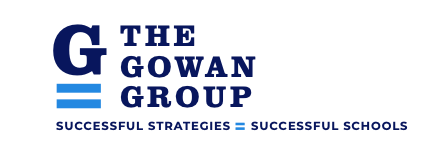Fred McGaughan, Gowan Group 1/6/15
As an English major and former teacher, now a branding professional, I’m struck by the similarities between savvy strategic branding and positioning and the old 500-word theme. In middle school, high school, or college, you may have found expository writing to be a chore, but love it or hate it, the 500-word theme remains a wonderful model for strategic thinking. And the application of that disciplined approach to writing holds some uncanny similarities to your branding.
Think about it: In sophomore year, you had just read The Great Gatsby, and you had a 500-word theme due in one week. A daunting proposition for any student, right? But your English teacher had spent most of the first marking period stressing that a step-by-step strategy would lead you to a. Do some close re-reading b. Brainstorm with impunity to get all your ideas down on paper c. Organize your thoughts to look for trends and “Ah-Hah!” topics d. Decide on a thesis statement that is important, compelling, and original e. Stick to that message with two or three topic sentences and f. Support each topic sentence with two or three supporting statements or quotations. Voila! Now you had a message of interest for your reader, an outline--a path to follow as you polished up your phrasing, sought your “grabber” opening line, and developed a conclusion. With this disciplined approach, in a short two and one half pages you had something clear, original, intriguing, and memorable to say.
It’s easy to see the similarities between this disciplined approach to theme writing and your branding and marketing. There are so many moving parts and so many things to say, but you don’t want to move forward without a. Conducting research to test your assumptions of who you are and what you do best (close reading) b. Gathering leadership and key stakeholders to hold candid, free-ranging discussions about current and emerging issues (brainstorming) c. Analyzing the plethora of information (organizing and looking for trends) d. Creating important, original, and sticky mission and vision statements (thesis) e. Affirming those statements with at least two or three of your signature program elements (topic sentences) and f. Drilling down with specific examples that irrefutably buttress your claims (supporting evidence).
Huzzah! By taking this disciplined approach to your branding, you and your “reading” audience now have a much better understanding of your brand. You’ll still need that “grabber” (tag line) and a compelling conclusion (delivery on your promises), but your teacher (Board Chair, President, Head) just might just upgrade you from a C+ to an A by the end of the term (praise and raise).
To learn more about Fred, our Managing Director, please visit our site at www.thegowangroup.com.
